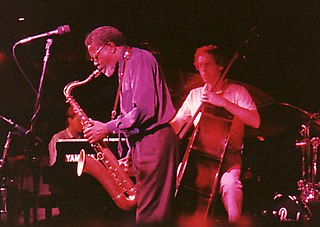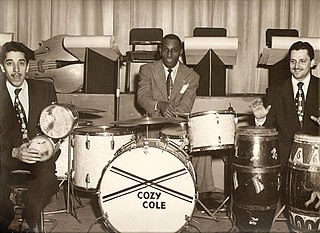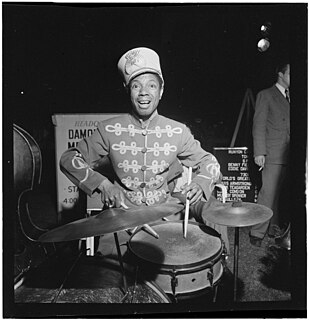June Lawrence Cole (1903, Springfield, Ohio – October 10, 1960, New York City) was an American jazz bassist, tubist, and singer.

Springfield is a city in the U.S. state of Ohio and the county seat of Clark County. The municipality is located in southwestern Ohio and is situated on the Mad River, Buck Creek and Beaver Creek, approximately 45 miles (72 km) west of Columbus and 25 miles (40 km) northeast of Dayton. Springfield is home to Wittenberg University, a liberal arts college.

The City of New York, usually called either New York City (NYC) or simply New York (NY), is the most populous city in the United States. With an estimated 2017 population of 8,622,698 distributed over a land area of about 302.6 square miles (784 km2), New York is also the most densely populated major city in the United States. Located at the southern tip of the state of New York, the city is the center of the New York metropolitan area, the largest metropolitan area in the world by urban landmass and one of the world's most populous megacities, with an estimated 20,320,876 people in its 2017 Metropolitan Statistical Area and 23,876,155 residents in its Combined Statistical Area. A global power city, New York City has been described as the cultural, financial, and media capital of the world, and exerts a significant impact upon commerce, entertainment, research, technology, education, politics, tourism, art, fashion, and sports. The city's fast pace has inspired the term New York minute. Home to the headquarters of the United Nations, New York is an important center for international diplomacy.
Jazz is a music genre that originated in the African-American communities of New Orleans, United States, in the late 19th and early 20th centuries, and developed from roots in blues and ragtime. Jazz is seen by many as "America's classical music". Since the 1920s Jazz Age, jazz has become recognized as a major form of musical expression. It then emerged in the form of independent traditional and popular musical styles, all linked by the common bonds of African-American and European-American musical parentage with a performance orientation. Jazz is characterized by swing and blue notes, call and response vocals, polyrhythms and improvisation. Jazz has roots in West African cultural and musical expression, and in African-American music traditions including blues and ragtime, as well as European military band music. Intellectuals around the world have hailed jazz as "one of America's original art forms".
Cole's first major employment in music was with the Synco Jazz Band in Ohio; this group later became McKinney's Cotton Pickers while Cole was still a member. He left the Cotton Pickers in 1926 to play under Fletcher Henderson, with whom he stayed until 1928. While with Henderson he played on recordings behind Bessie Smith. In 1928 he toured Europe with Bennie Peyton. He remained in Europe for over ten years, playing in the bands of Sam Wooding and Willie Lewis, but spent most of the years 1936-1939 out of music while recovering from a prolonged illness in Paris. He returned to the United States in 1941, leading his own bands in New York and playing in a quartet with Willie "The Lion" Smith in 1947. He continued playing locally in New York through the 1950s, and also ran a record store in Harlem.
McKinney's Cotton Pickers were an African American jazz band, in Detroit, Michigan in 1926 led by William McKinney, who expanded his Synco Septet to ten pieces. Cuba Austin took over for McKinney on drums. Between 1927 and 1931, they were one of the most popular African-American bands. Many of their records for Victor were bestsellers.

James Fletcher Hamilton Henderson Jr. was an American pianist, bandleader, arranger and composer, important in the development of big band jazz and swing music. He was one of the most prolific black musical arrangers and, along with Duke Ellington, is considered one of the most influential arrangers and bandleaders in jazz history. Henderson's influence was vast. He helped bridge the gap between the Dixieland and the swing eras. He was often known as "Smack" Henderson.

Bessie Smith was an American blues singer. Nicknamed the Empress of the Blues, she was the most popular female blues singer of the 1920s and 1930s. She is often regarded as one of the greatest singers of her era and was a major influence on fellow blues singers, as well as jazz vocalists.









